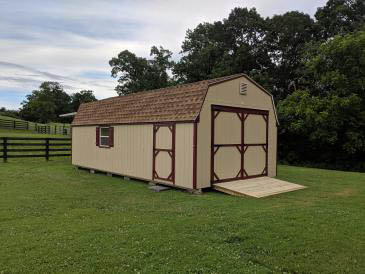Is the site rocky or wooded? Will trees need to be removed and who will remove them? If you need a crane, are there overhead obstacles like power lines, signs, other building overhangs to consider?
If you must dig or level the lot, for your storage shed, be sure there are no gas or waterlines nearby. Are there septic lines or a septic tank in the area or are there buried power or cable lines? Contact your service providers who will come to the site of your proposed storage shed and mark any lines for you. They will also be able to give you any information you need for the next step, permits.
Once you know which storage shed you want, what it is going to be made of, and where you want it to sit, now you need to see if it’s allowed. Before you spend a dollar, check with your local building code enforcement office. Building code officials will have more detailed information for your area. Rules and requirements like property setbacks or zoning restrictions can limit the size of your shed or restrict where it goes.
Get permits. Most towns or municipalities have regulations and requirements regarding buildings and shed permits. Taking care of any permits or inspections is always the responsibility of the property owner. Often permit applications ask for building specifications and plans as part of the process. This is another good reason to collaborate close with a dealer who can supply that information.



